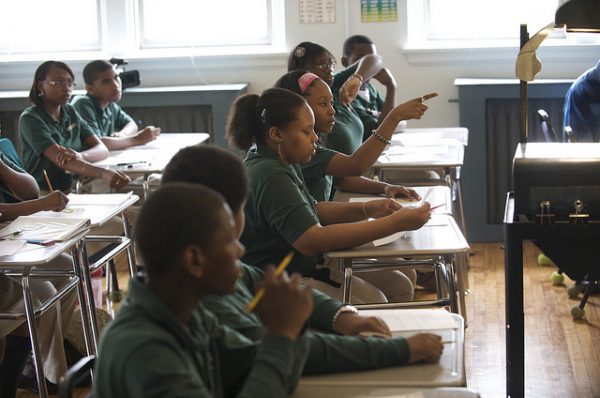
Teachers face difficult decisions in their classrooms, navigating both practical and more complex aspects of their profession. Racial segregation and discrimination are some of these more complex issues. In her recent study, Jessica S. Cobb investigated how teachers understand existing racial inequalities in their schools and beyond. She found that the local context of schools significantly shaped teacher perceptions of inequality.
Cobb interviewed 60 public school teachers from three different California high schools. Two schools, with the pseudonyms “Bunker High” and “Solidarity High,” served predominantly low-income Latinx and Black students. The third school, “Heritage High,” served a mainly affluent, and majority White and Asian student population. Each school’s demographics, resources, and professional development characteristics helped to create a local culture that shaped how teachers thought about educational inequality.
In a context of abundance and independent professionalism, Heritage High teachers attributed their privileged students’ success to their parents’ personal and financial investments. They perceived student differences to be the result of economic, rather than racial inequality. On the other hand, many Bunker High students lived in precarious food and housing situations, and the school itself lacked resources for teachers. These school characteristics, in combination with constant in-fighting among the school board and other administrators, meant teachers at Bunker High understood inequality as the result of this dysfunction. They said that dysfunction among adults, including school teachers, administrators, and parents, reduced student chances of success, and teachers often discussed this dysfunction along racial lines. While Bunker High and Solidarity High served similar student populations, Solidarity High had many resources and boasted a collaborative culture among teachers. Because of this local context, teachers at Solidarity High attributed inequality directly to racism.
Understandings of race and racial inequality are more than just individual dispositions. They are shaped by the social context of day-to-day life. Cobb’s study suggests that when schools like Solidarity High receive more resources and foster a collaborative teacher culture, there are both material and immaterial benefits. In other words, school structures provide an important context for teacher’s perceptions of how inequality operates in their own schools and elsewhere.

Comments